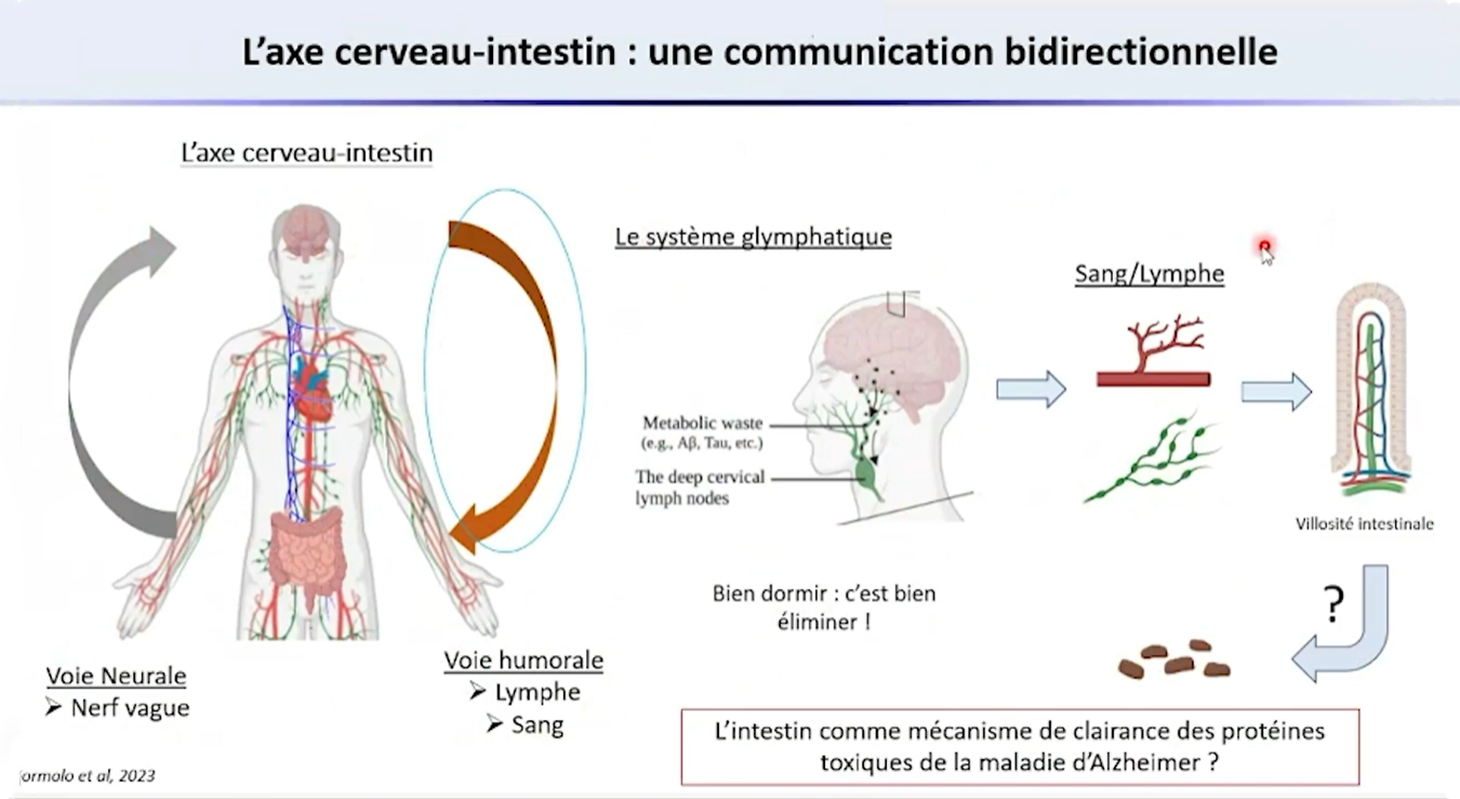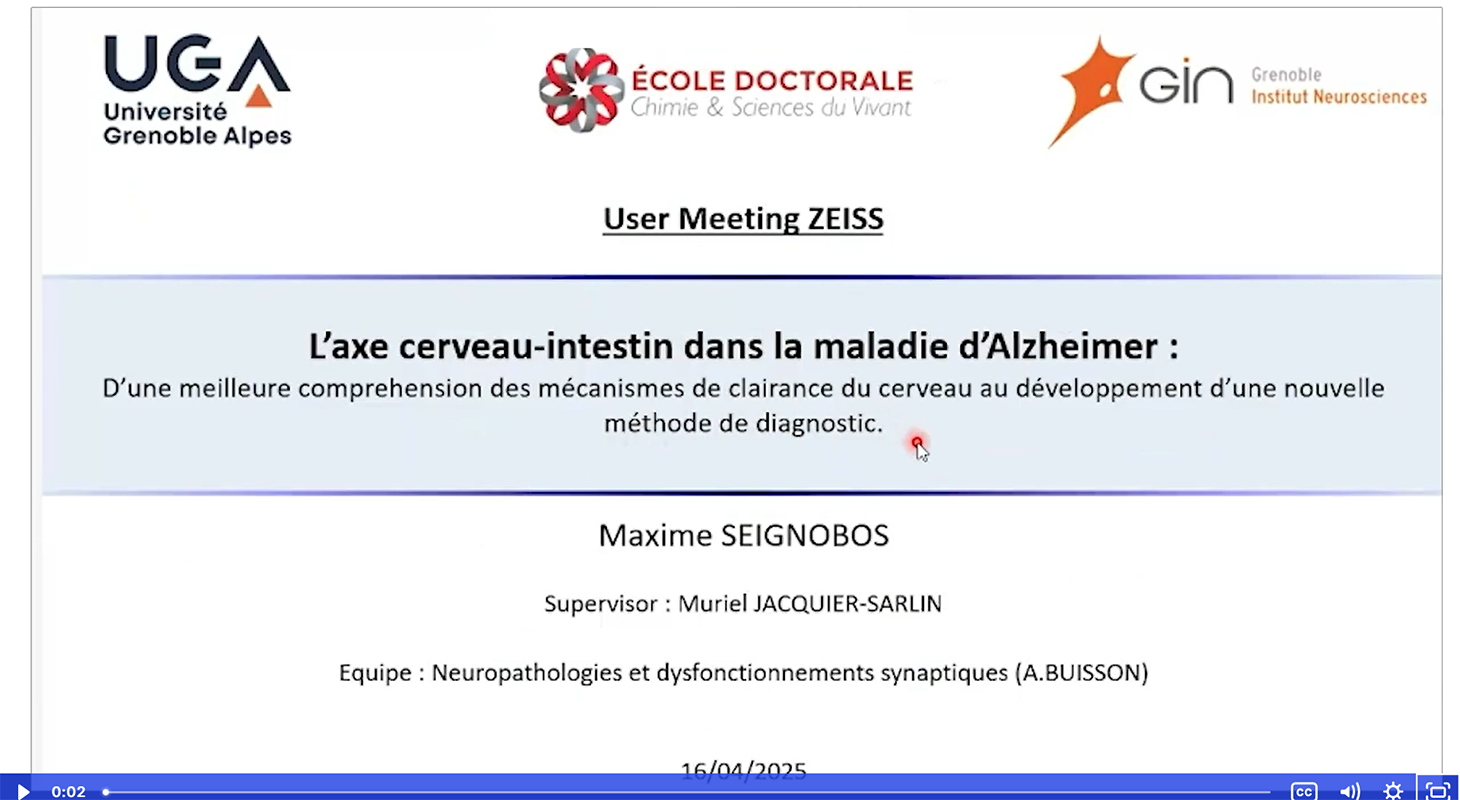- Share
- Share on Facebook
- Share on X
- Share on LinkedIn
Communiqué, Lecture / Alzheimer, Science for all
On July 30, 2025

In a webinar recorded for Zeiss, Maxime Seignobos, a doctoral student at GIN, presents his research on the links between the brain, the intestine, and neurodegenerative disease. This work could lead to early, non-invasive diagnosis of Alzheimer's disease.
Today, Alzheimer's disease, which affects 1 million people in France, is only diagnosed after the onset of cognitive impairment. However, we know that the amyloid plaques and tau protein responsible for neurodegeneration begin to accumulate 10 to 20 years before the onset of these symptoms.
“If we could detect these markers earlier, we could take action before they cause irreversible damage to the brain,” explains Maxime Seignobos, who, with this in mind, chose to explore the brain-intestine axis. He conducts his research under the supervision of Muriel Jacquier-Sarlin, in the “neuropathologies and synaptic dysfunctions” team.
“We know that brain waste is eliminated by the glymphatic system,” explains the young researcher. "From the brain, these metabolic wastes pass into the lymphatic vessels but also into the blood vessels. And it turns out that these two networks are extremely well developed in the intestinal villi, where nutrient absorption takes place. But there could also be exchanges in the other direction, with the elimination of toxic proteins. The intestine could therefore play a very important role in this clearance mechanism, and markers of Alzheimer's disease could be found in feces well before the first symptoms appear."
On the PIC-GIN imaging platform, using the ZEISS Airyscan detector coupled with the LSM 900 confocal microscope, Maxime Seignobos produced high-resolution images of intestinal villi and a 3D reconstruction of the intestine to gain access to the entire networks of blood and lymphatic vessels.
"We were able to show that tau protein and Aβ protein were transported by the lymphatic system rather than the bloodstream to the intestinal villi for elimination. We also found these markers of Alzheimer's disease in the feces of mice well before plaque deposition, synaptic loss, and cognitive impairment, which tends to prove that a pathway for the elimination of tau and Aβ proteins does indeed exist between the brain and the intestine," says Maxime Seignobos. “Measuring these tau and Aβ proteins could therefore be used as a non-invasive tool for the early diagnosis of Alzheimer's disease,” concludes the young researcher.
To view the webinar, click on the image.
Webinar presented at the Zeiss User Meeting in Lyon on April 16, 2025,
marking the 10th anniversary of Airyscan technology.
Date
- Share
- Share on Facebook
- Share on X
- Share on LinkedIn
